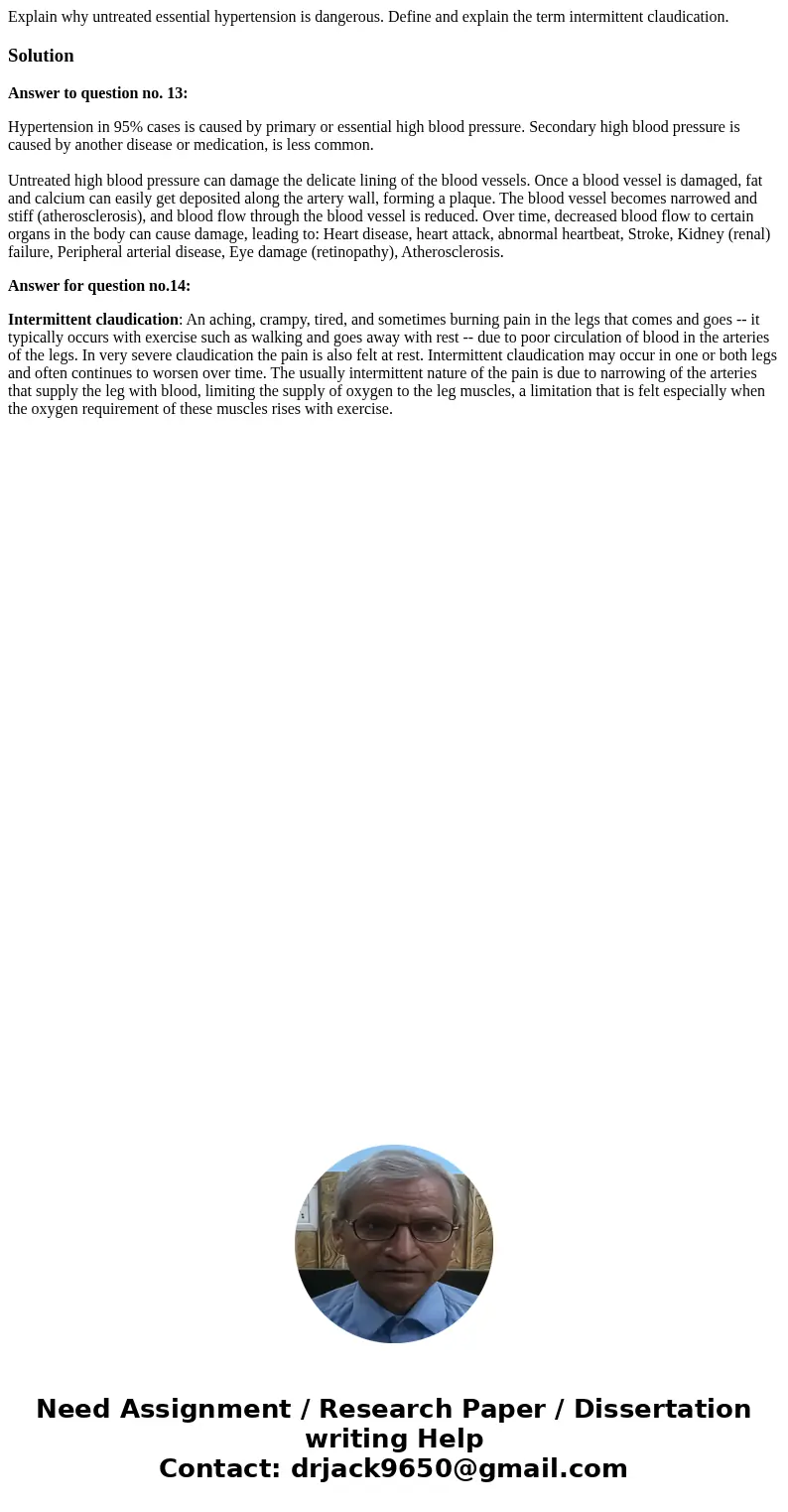Explain why untreated essential hypertension is dangerous De
Solution
Answer to question no. 13:
Hypertension in 95% cases is caused by primary or essential high blood pressure. Secondary high blood pressure is caused by another disease or medication, is less common.
Untreated high blood pressure can damage the delicate lining of the blood vessels. Once a blood vessel is damaged, fat and calcium can easily get deposited along the artery wall, forming a plaque. The blood vessel becomes narrowed and stiff (atherosclerosis), and blood flow through the blood vessel is reduced. Over time, decreased blood flow to certain organs in the body can cause damage, leading to: Heart disease, heart attack, abnormal heartbeat, Stroke, Kidney (renal) failure, Peripheral arterial disease, Eye damage (retinopathy), Atherosclerosis.
Answer for question no.14:
Intermittent claudication: An aching, crampy, tired, and sometimes burning pain in the legs that comes and goes -- it typically occurs with exercise such as walking and goes away with rest -- due to poor circulation of blood in the arteries of the legs. In very severe claudication the pain is also felt at rest. Intermittent claudication may occur in one or both legs and often continues to worsen over time. The usually intermittent nature of the pain is due to narrowing of the arteries that supply the leg with blood, limiting the supply of oxygen to the leg muscles, a limitation that is felt especially when the oxygen requirement of these muscles rises with exercise.

 Homework Sourse
Homework Sourse